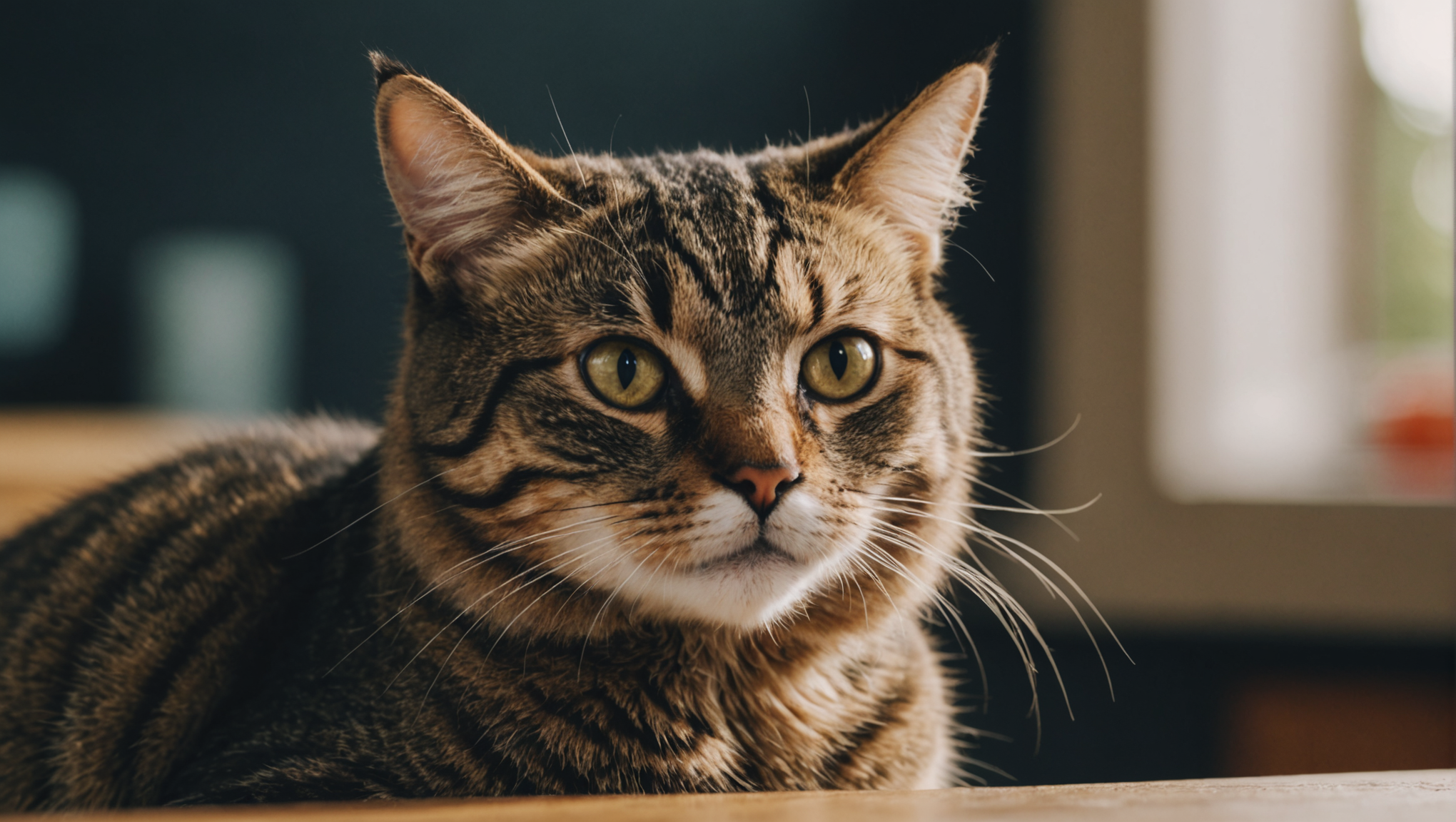
To effectively address the issue of biting in our feline companions, it’s paramount to first delve into the intricate tapestry of cat behavior, which is often misunderstood by even the most devoted pet owners. Cats, by their very nature, are creatures of instinct, and their actions are frequently driven by an array of social and environmental factors. Understanding the nuances of cat behavior can dramatically alter the way we interpret their actions, leading us to more compassionate and effective training strategies.
At the heart of feline behavior lies their communication methods, which are distinctly different from those of humans. Unlike dogs, who may exhibit overt signs of affection and assertiveness, cats often convey their feelings through subtle cues. A twitching tail, an arched back, or the gentle kneading of their paws may signify affection, excitement, or even agitation. Therefore, it’s critical for cat owners to familiarize themselves with these signs to better interpret their cat’s emotional state.
Moreover, the evolutionary history of felines has endowed them with natural hunting instincts. Engaging in predatory play is an inherent behavior; therefore, a cat’s biting might not stem from aggression but rather from an innate desire to stalk and capture. This predilection manifests through biting elements of their environment, which can include their human companions. A playful bite, albeit seemingly innocuous, can quickly escalate into a painful incident, leaving many owners perplexed about their cat’s true intentions.
Furthermore, various factors can influence a cat’s propensity to bite. Stressful circumstances, such as changes in their environment—ranging from new household members to moving homes—can provoke feelings of insecurity, leading to defensive and aggressive behaviors. As Dr. John Bradshaw, an esteemed feline behaviorist, eloquently posits, understanding these stress triggers can foster empathy and better management techniques for owners seeking to alleviate such behaviors.
Additionally, the early socialization experiences of a kitten play an important role in shaping its behavior as an adult. Kittens learn vital social cues during their formative weeks, typically between two and nine weeks of age. Those that are inadequately socialized may lack the necessary skills to interact peacefully with humans and their fellow pets, often resorting to biting as a means of expressing discomfort or fear. Recognizing the developmental milestones in a kitten’s life can provide insights into preventive measures that can be taken by conscientious owners.
In essence, a profound understanding of cat behavior is essential for interpreting the reasons behind biting incidents, enabling owners to respond with patience and knowledge rather than frustration. This cultivation of understanding not only enhances the bond between cat and owner but also paves the way for a harmonious coexistence, marked by mutual respect and affection.
Identifying triggers for biting
In the quest to unravel the reasons behind a cat’s biting behavior, it is essential to engage in thoughtful and systematic observation of the various stimuli that may provoke such reactions. Often, biting can be ascribed to specific triggers in a cat’s environment or routine—analyzing these triggers can empower owners with the insights needed to implement corrective strategies. Recognizing the signs of agitation or playfulness, for instance, becomes an exercise in mindfulness, fostering a more harmonious interaction between feline and human.
As a starting point, ponder the various contexts in which biting occurs. Is the behavior exhibited during play? If so, it may be indicative of your cat’s ingrained predatory instincts surfacing in a moment of exuberance. Cats often perceive their human companions as fellow felines during play sessions, leading to a misunderstanding of physical boundaries. In such instances, playful biting can easily escalate if the owner inadvertently encourages the behavior through frantic movements or reactions. A shift in approach during these interactions—such as using toys rather than fingers—can redirect their attention towards appropriate play behavior.
Moreover, while play-related biting may stem from instinctual urges, instances of biting out of fear, discomfort, or irritation demand urgent attention. For example, if an otherwise affectionate cat becomes suddenly aggressive when petted in certain areas—perhaps around the belly or tail—it very important to reevaluate both the timing and manner of interaction. Dr. Becker emphasizes that understanding a cat’s body language is pivotal; cats may exhibit subtle signals, such as flattened ears, dilated pupils, or a stiffened posture, before they resort to biting. This extensive repertoire of communication should never be overlooked, as attentive responsiveness can foster an atmosphere of security and trust.
Additionally, disruption of routine—be it through visitors, loud noises, or changes to household dynamics—can contribute to a cat’s anxiety level, leading to defensive biting. When faced with perceived threats, cats may react instinctively to defend their territory or themselves, illustrating the importance of providing a stable environment. Maintaining predictability in their daily lives, along with safe spaces where they can retreat and observe from a distance, can alleviate stress and reduce the frequency of aggressive encounters.
Paying close attention to the timing of biting incidents also sheds light on potential triggers. For instance, if biting is recurrent in the seconds leading up to mealtime or after a prolonged period of inactivity, it may signal frustration or a desire for attention. A comprehensive understanding of an individual cat’s moods and motivations can transform daily interactions into opportunities for positive engagement, ultimately diminishing the urge to bite.
Importantly, owners must acknowledge the critical role they play in shaping their cat’s reactions. Feedback from owners—whether through verbal cues, body language, or actions—can either reinforce or discourage aggressive behaviors. For instance, if a cat bites and the owner reacts with loud yells or sudden movements, the cat may interpret this as part of the game, thereby perpetuating the cycle. As the saying goes, ‘A calm owner raises a calm cat,’ reflecting how our demeanor significantly influences feline emotional states.
Embracing patience and fostering an in-depth understanding of the myriad triggers that prompt biting behavior will not only elevate the quality of your interspecies relationship but will also contribute to a more tranquil household environment. As we endeavor to comprehend the complexities of a cat’s emotional landscape, we take further steps toward nurturing a partnership based on mutual respect, where play prevails over pain and understanding reigns over fear.
Positive reinforcement techniques
When considering the most effective methods to alter a cat’s biting behavior, positive reinforcement emerges as a cornerstone technique that fosters not only compliance but enhances the relationship between feline and human. Unlike punitive methods that may induce fear or anxiety, which could escalate aggressive behavior, positive reinforcement invites a cooperative spirit, allowing cats to learn through encouragement rather than coercion. This approach centers on rewarding desired behaviors, thereby increasing their frequency and helping to shape a more harmonious coexistence.
At its essence, positive reinforcement hinges on the timely provision of rewards following a desired action. For instance, when a cat refrains from biting during a playful interaction—perhaps choosing to engage with a toy instead—a small treat or verbal praise serves to reinforce this acceptable behavior. Through repetition and consistency, the cat begins to associate playtime with positive responses, gradually reducing the likelihood of aggressive biting. As Dr. Becker often notes, “Training should be as much about nurturing the bond between you and your pet as it’s about correcting behaviors.” This nurturing aspect is vital, as it transforms the training process into a constructive experience.
Using treats is a widely practiced form of positive reinforcement, but it is essential to select items that are both enticing and healthy for your feline companion. Offering small morsels of their favorite snacks can serve as a powerful incentive, yet should be administered sparingly to avoid overindulgence. Additionally, many owners overlook the impact of verbal affirmations and physical affection as forms of rewards. A gentle stroke or an enthusiastic “good kitty” accompanied by playful engagement can motivate a cat to gravitate toward positive interactions over aggressive displays. Recognizing that each cat has unique preferences allows owners to tailor their approaches, ensuring that rewards resonate with their individual pets.
Moreover, the power of timing cannot be understated in the realm of positive reinforcement. Immediately following the desired behavior with a reward reinforces the connection in the cat’s mind. For example, if a cat exhibits appropriate play behavior by batting at a toy rather than the owner’s hand, delivering praise or a treat swiftly after this action solidifies the lesson. The shorter the time between the behavior and the reward, the more profound the learning experience becomes.
In addition to direct rewards, owners can employ clicker training as a precise form of positive reinforcement. The clicker acts as a marker that signals the exact moment a desired behavior occurs, followed immediately by a reward. This method not only sharpens communication but also provides an audible cue that clarifies the expectations for the cat, fostering a sense of accomplishment as they learn to connect their actions with the resultant reward.
Another vital component of this technique involves consistency. All household members must be on the same page regarding acceptable behavior, as mixed messages can bewilder a cat and obfuscate the learning process. A bite after being encouraged in play one moment and reprimanded the next can result in confusion rather than clarity. Establishing clear boundaries and maintaining uniform techniques across interactions empowers cats to learn more effectively and reinforces their understanding of acceptable versus unacceptable behaviors without instilling fear.
Importantly, the journey to modifying a cat’s biting behavior is one of patience and understanding. Progress will often vary, necessitating a flexible approach that adapts to the individual cat’s personality and learning style. Just as in human education, some cats may require more time and repetition before behaviors are adopted, while others may grasp concepts more readily. Acknowledging and celebrating incremental victories—not just the eradication of biting—can transform the process into a shared journey of growth that fortifies the human-feline bond. As the late cat behaviorist Jackson Galaxy wisely expressed, “The goal is not to change our cats; it is to change the way we relate to them.”
In essence, positive reinforcement serves as a transformative tool that goes beyond mere behavior modification; it cultivates an enriched relationship built upon trust, respect, and joyful interaction. The impact of this approach reverberates throughout the household, fostering an environment in which both cat and owner thrive in the spirit of companionship and mutual understanding.
Teaching alternative behaviors
In the quest to replace biting behaviors with more desirable actions, it is pivotal to introduce and teach alternative behaviors that fulfill a cat’s innate desires without leading to aggressive interactions. This method not only enhances the cat’s engagement but also protects the owner from unintentional injury, mitigating the frustrations commonly associated with biting incidents. Effectively channeling a cat’s energies and instincts into constructive outlets paves the way for a deeper connection rooted in understanding and cooperation.
One of the most effective ways to instill alternative behaviors is by redirecting a cat’s natural play instincts toward appropriate and engaging activities. For instance, if a cat is prone to biting during play, providing a variety of toys—such as feather wands, laser pointers, or interactive puzzle toys—can serve to engage their predatory drive without resorting to aggressive grabs at human hands or feet. Engaging in structured play sessions encourages physical activity and stimulates mental engagement, allowing the cat to exert energy in a non-destructive manner. Dr. Becker emphasizes the importance of interactive play, as it mimics the social and predatory interactions cats would experience in a more natural setting, ultimately cementing a more satisfying relationship between pet and owner.
Another avenue worth exploring involves the introduction of commands or cues that signal alternative behaviors. Cats, though often perceived as independent and aloof, possess a remarkable capacity for learning and can respond effectively to consistent verbal cues or hand signals. For example, when a cat approaches to bite during play, delivering a prompt and gentle “no” followed by redirecting them to a toy can foster an understanding that biting is not acceptable, while concurrently offering an engaging alternative. This consistent reinforcement helps the cat to form new habits—a concept that aligns closely with B.F. Skinner’s operant conditioning principles, where desirable behaviors are encouraged through structured responses.
Establishing routines that prioritize play and physical activity can also significantly diminish unwanted biting behaviors. By dedicating specific times each day to engage in interactive play, owners create a rhythm in which the cat’s energy can be expended positively. These routines become anticipated moments of joy for cats, offering them a constructive outlet for their natural instincts and reducing the likelihood of aggressive behaviors stemming from boredom or frustration. As the adage goes, “A tired cat is a happy cat,” underscoring the merits of exercising both mind and body through purposeful interaction.
Additionally, fostering environments that allow for mental stimulation can also serve to diminish the propensity for biting. This can be achieved through the strategic placement of scratching posts, climbing trees, or toys that promote exploration and discovery—elements that cater to a cat’s curiosity and inherent desire to survey their territory. When cats are invested in their surroundings, their focus is diverted from undesirable behaviors, preventing the escalation of frustration that can lead to biting. It’s akin to providing children with engaging activities; when there are stimulating options available, they’re less likely to resort to negative behaviors.
A pivotal aspect of teaching alternative behaviors is the reinforcement of positive interactions during times when the cat exhibits calmness and restraint. When a cat chooses to engage with its toys rather than its owner’s hands, immediate praise or a small treat reinforces that choice. Over time, these positive experiences will outweigh the inclination to bite, cultivating an association between the release of pent-up energy and constructive behavior. As Dr. Pam Johnson-Bennett states, “Cats want to please; they need to be taught what pleases you.” Thus, training becomes a collaborative endeavor based on mutual respect and trust.
Finally, it is essential to recognize and celebrate small victories throughout this journey of behavioral modification. Acknowledging and rewarding moments when the cat refrains from biting or opts for play with toys fosters a positive feedback loop, encouraging the cat to continue making those choices. This not only reinforces the desired behaviors but also leads to a stronger bond, one forged through patience, understanding, and shared moments of joy. As each small step toward appropriate behavior is met with affirmation, the relationship between cat and owner deepens into one founded on cooperation rather than conflict.
Ultimately, the process of teaching alternative behaviors is a dynamic and ongoing endeavor—one that reflects the cat’s inherent needs while addressing the owner’s expectations. It requires creativity, consistency, and a commitment to nurturing an environment where mutual understanding flourishes, making biting a relic of the past and paving the way for a fulfilling companionship built on positive interactions.
Creating a safe play environment
Creating a safe play environment for your feline companion is paramount in curbing biting behavior while at once enhancing the enjoyment and engagement that characterizes the cat-owner relationship. Such an environment serves as both a sanctuary for your cat and a playground that caters to its natural instincts, thereby reducing the likelihood of aggressive displays, including unwanted biting.
To begin with, it is essential to evaluate your current play spaces and think whether they adequately promote safe and stimulating interactions. The use of engaging toys that mimic the movements of prey is fundamental; feather wands, balls, and laser pointers cater to a cat’s prey drive and encourage active participation without posing a risk to human fingers. Importantly, toys should be designed to prevent accidental injuries; for example, avoid using string or yarn in games, as these can lead to choking hazards or the risk of entanglement. Instead, invest in toys specifically designed with safety features that allow for vigorous play without jeopardizing your cat’s well-being.
Furthermore, establishing designated play areas can foster a sense of security for your cat. Areas should be free from clutter and potential hazards, such as sharp objects or heavy furniture that a lost ball might roll under, causing unforeseen injuries. A tranquil space where your cat can retreat if it feels overwhelmed is also crucial. Providing cozy hideaways—like cat trees or enclosed beds—offers solace when playtime becomes too rambunctious or when external stimuli trigger stress. Dr. Becker often emphasizes that creating an environment conducive to relaxation enables cats to feel secure and in control, thus minimizing behaviors stemming from anxiety.
Adapting your play sessions to respect your cat’s energy levels and mood is another integral aspect of crafting a safe play environment. Engage in interactive play when your cat exhibits signs of readiness—these might include pouncing, stalking behaviors, or a heightened level of meowing. Alternatively, if your cat displays signs of fatigue or disinterest, forcing play could inadvertently lead to frustration and the possibility of biting. The key here is to read your cat’s body language and respond accordingly. As you foster this attunement, you strengthen the bond through a collaborative understanding that prioritizes your cat’s welfare.
Moreover, integrating environmental enrichment into your home is a highly effective strategy for providing mental stimulation alongside physical play. Items such as scratching posts, climbing structures, and puzzle feeders contribute to a cat’s well-being, allowing it to express its natural instincts. This interconnected play fosters both mental and physical engagement, reducing boredom-driven biting that often results from a lack of stimulation. The deployment of these enrichment tools allows for exploration and occupation, transforming your home into an adventure ground that actively captivates your cat’s interest.
Incorporating scheduled playtime into your daily routine not only cements the sense of predictability in your cat’s life but also enhances the overall relationship dynamics. Consistent time dedicated to interactive play cultivates anticipation, providing your cat with a rhythmic outlet for its energy. This commitment to regular play fosters an emotional connection; each session becomes a shared experience that strengthens interpersonal ties. As the old saying goes, “A happy cat is a well-played cat,” illustrating how thoughtful scheduling can lead to a balanced home environment.
It is also essential to create a harmonious environment by mitigating any stressors that could precipitate biting behavior. Loud noises, rapid movements, or chaotic household dynamics can overwhelm sensitive cats, prompting flight or fight responses. Maintaining a calm atmosphere—especially during playtime—can significantly reduce instances of fear-based biting. Being mindful of external triggers is paramount in creating a sanctuary for your cat, allowing it the freedom to engage joyfully rather than reactively.
Finally, it falls upon the cat owner to embody patience and understanding as they work to establish this safe play environment. The lessons learned through responsible play not only reduce biting incidents but also create space for trust and cooperation. Every time your cat chooses to engage with toys rather than teeth, it reflects a positive relationship built on respect and shared joy—a foundational principle that underscores all successful human-feline interactions.
By nurturing a safe and stimulating play environment, one affording choice and security, you empower your cat to thrive both behaviorally and emotionally. This endeavor is not merely about mitigating unwanted behaviors—it’s about cultivating a vibrant partnership marked by playful exploration, mutual trust, and affectionate connection.







